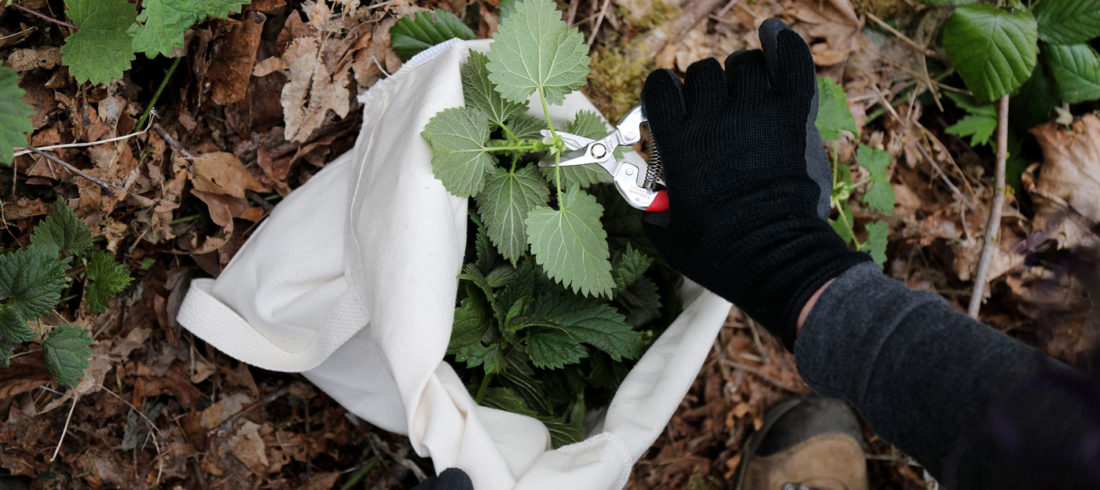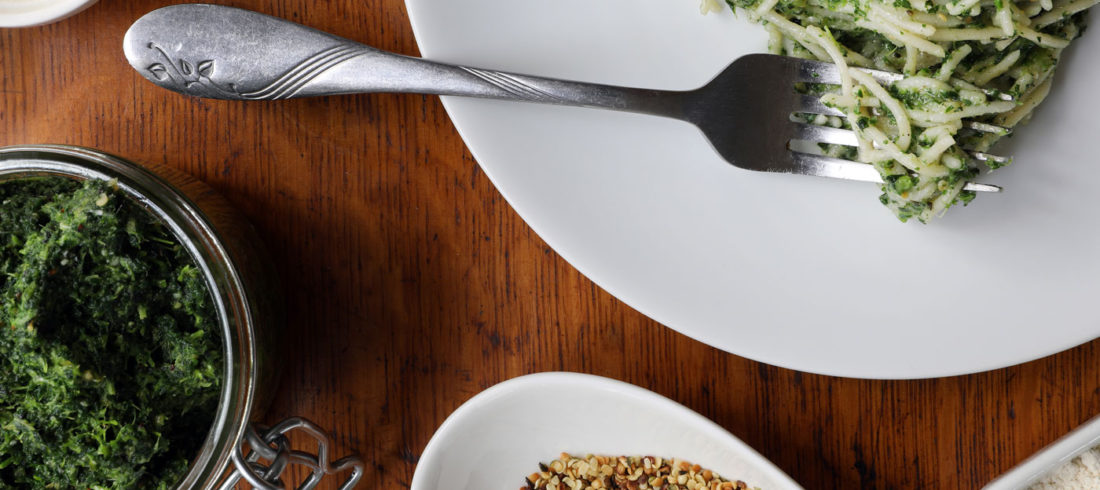I spent my childhood in the Midwest trying to avoid the nettle’s sting. This bright green plant was plentiful on the land near the farm’s ponds and creek beds. I had no idea that what we considered a weed was something so desirable until I visited my local farmers market as an adult living in Oregon, where it goes for 16 dollars a pound! Once I learned how easy it is to identify and harvest this plant, I got hooked on nettle hunting (taking care to only collect what I need, of course).
Coveted by herbalists, nettle is a tonic herb that is often used as a nourishing and tasty food, a strengthening and refreshing tea, a support for healthy urinary function with a mild diuretic action*, and as a mild astringent. It contains antioxidants like phenolic compounds, vitamin E, and melatonin. And, based on data from the USDA, nettle leaf powder is probably one of the richest sources of minerals among edible plants.
Dried nettle leaves can be found year-round at places like the Mountain Rose Herbs Mercantile, but it’s also an easy plant to grow and can be collected in Lane County’s woods in the springtime.

How to harvest nettle
The stinging part on nettles—located on the stem and the underside of the leaves—is composed of thin, hollow hairs called trichomes. For some people, the “tingle” (often described as an itch or a burn) may last for up to 24 hours. But, by using proper passive-harvesting strategies, the nettle’s infamous tingle can be kept at bay.
Where nettle is prolific, it is quite prolific and grows vigorously. However, this may not be the case in every patch. In the wild, it may not be as abundant (particularly in forests) as it is in gardens, meadows, lawns, or in less wooded areas. The edges of farms and meadows are a good place to keep your eye out for it. Venturing into the woods on hiking paths is another good plan, although you should check to make sure you’re allowed to forage in the area first. Low areas or descending paths beside or leading to streams or other small bodies of water are also excellent areas to search.
If harvesting nettles from woodlands or generally wild places, ethical harvesting practices suggest never taking more than one-third of any single plant in an area, not taking more than one in 10 individuals in a patch, and not taking from the best-looking or the worst-looking plants. Never keep a plant that can’t be identified without 100-percent certainty. To be an extra-conscientious nettle hunter, download the wildcrafting checklist, created by local plant guru and herbalist Howie Brounstein, from the Columbines School of Botanical Studies: NettleHarvest.

Bring the proper tools to avoid touching the plant with your bare skin. These include:
- Thick canvas gloves
- Thick pants and a tightly-woven, long-sleeved shirt
- A pair of garden snippers, pruners, or scissors
- A paper bag, bucket, or burlap sack to hold your harvest
Once the right nettle is identified:
- Always wear gloves when handling the plant
- Cut the fresh nettles at one of their nodes, snipping directly into a bag, bucket, or burlap sack
- Allow the cut nettles to wilt slightly before handling
The cut nettles will wilt fairly quickly and the hollow trichomes will deflate, but to play it safe, keep gloves on whenever handling the raw leaves.
How to use nettle
I enjoy nettle in nourishing herbal infusions, dried for tea, or blanched as a substitute for cooked spinach (in spinach lasagna or atop pizza). But my favorite preparation is a simple pesto, which works well with fresh or dried organic nettles.

Stinging Nettle Pesto Recipe
Ingredients
2-4 tablespoons organic hulled hemp seeds, pine nuts, walnuts, or other nut/seed of your choice
4-5 ounces fresh nettle leaves and stems (or 2 cups dried organic nettle leaf)
2-3 ounces grated organic parmesan
finely-ground sea salt or other salt of your choosing, to taste
1-2 peeled organic garlic cloves (or 1-2 teaspoons organic garlic powder), or to taste
3/4 cup organic extra virgin olive oil, or to desired consistency
Directions
Bring large pot of water to boil. Set aside another large bowl of ice water. Toast hemp seeds or other nut/seed on a hot frying pan for about one minute, or until golden brown, but not burned. Remove from heat. Once water boils, place nettle into boiling water using tongs. If using fresh nettle, be careful not to touch it with bare hands. Blanch nettle for one to two minutes. This will remove the sting. Remove nettle from boiling water and place in bowl of ice water to retain its bright green color.
Turn off heat on boiling water, but reserve the water for boiling your pasta if using the pesto as a pasta sauce. It can also make for a nutritious tea.
Once nettle has cooled (about five minutes), remove it by the handful and squeeze out excess water. Place squeezed nettle on a kitchen towel to dry. Combine nettle and remaining ingredients (except olive oil) in a food processor or blender. Blend until ingredients are well-mixed and form a paste. With the blender or food processor running, slowly pour in oil until desired consistency is reached. Your pesto is now complete! Use immediately, refrigerate, or freeze.
Note: If using dried nettle, expect a darker-colored pesto. Also, if using dried, reconstitute your organic nettle leaf in warm water for about five minutes before boiling. A fine mesh strainer makes it easier to remove the small pieces of leaf from the boiling water as well as from the ice-water bath.
This pesto makes a tasty spread on bread or crackers, a delicious dip for fresh veggies, or a scrumptious sauce for pasta. It keeps in the fridge for up to a month and freezes well, too. In fact, I like to freeze my finished pesto in an ice cube tray for single servings to enjoy at a later date.
*This statement has not been evaluated by the Food and Drug Administration. This product is not intended to diagnose, treat, cure, or prevent any disease. For educational purposes only.
Photos courtesy of Mountain Rose Herbs.

